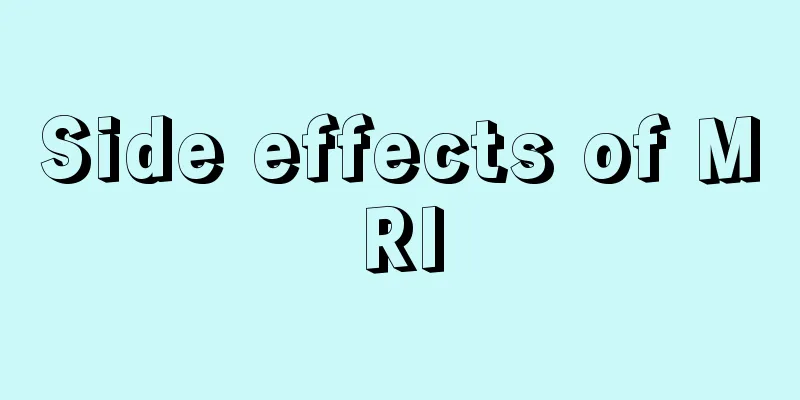I ate a banana and my stomach hurts

|
Banana is a very common fruit in our lives. It tastes very good and is rich in nutrients. However, some people will experience stomach pain after eating bananas. There are many reasons for this pain, and bananas are cold foods. Some people cannot eat too much of them, as eating too much is bad for the body. Let’s take a closer look at the main reasons why you may get a stomachache after eating bananas. Eating bananas may cause stomach pain or normal bowel movement Because bananas can promote gastrointestinal motility, and gastrointestinal motility is enhanced and intensified, it may cause some abdominal pain and problems with defecation. This is a very normal phenomenon. You should be aware that you are more sensitive to bananas, which may cause pain. You also need to check your bowel movements to see if they are smooth. Eating bananas may cause stomach pain or you may be allergic to bananas If you experience stomach cramps after eating a banana, it could be the result of an allergic reaction. Especially if you have stomachache every time you eat bananas, but not after eating other things, you may consider allergy. Different people have different physical conditions and may have allergic reactions to food and drugs. The manifestations of allergic reactions are also different. Some may manifest as abdominal pain, while others may manifest as rash and itching. Other allergy symptoms may include itching in the mouth or throat, hives, swelling or wheezing. People who are allergic to bananas may also be allergic to fruits or vegetables such as avocados or kiwis because they contain similar types of protein. Additionally, banana allergies may be linked to latex allergies. Tips: If this is the case, it is recommended that you do not eat bananas in the future, or eat less bananas. Of course, you have to rule out enteritis, gastritis, or indigestion. Eating bananas may cause stomach pain or your digestive system may be intolerant to fructose Fructose is a type of sugar found in fruit. It can also be found in table sugar and high fructose corn syrup. Some people have difficulty digesting and absorbing fructose, which can cause abdominal pain and diarrhea. Although bananas don't contain a lot of fructose, eating too many can still cause stomach pain. Hereditary fructose intolerance: An inborn error of metabolism caused by a defect in the enzyme glycosyltransferase. Due to the lack of fructose 1-phosphate aldolase, fructose 1-phosphate cannot be further metabolized and accumulates in the body, inhibiting the activity of liver phosphorylase, affecting glycogen degradation, and preventing gluconeogenesis at the level of fructose 1,6-bisphosphate. The main symptoms of this disease are hypoglycemia and vomiting after eating foods containing fructose. Once the diagnosis is confirmed, immediately stop all foods containing fructose and sucrose. Fructose and sucrose must not be consumed for life. Due to dietary restrictions, the intake of vitamin C is reduced and should be supplemented. Symptomatic treatment: When hypoglycemia occurs, intravenous injection of glucose can relieve and correct electrolyte imbalance, and those with bleeding tendency can be given component blood transfusion. Eating bananas may cause stomach pain or excessive stomach acid People with excessive stomach acid can easily suffer from gastrointestinal dysfunction by eating bananas. People with ulcers secrete more gastric acid, and people with diarrhea have poor gastrointestinal contraction ability. Eating bananas will aggravate the symptoms of gastrointestinal diseases and ulcers, causing stomach pain and discomfort. Therefore, it is generally not recommended for people with excessive stomach acid to eat bananas. Stomach pain after eating bananas or eating unripe bananas Eating unripe bananas can also cause stomach cramps. Because unripe bananas contain a lot of resistant starch, which is difficult for the human body to digest and absorb. Bananas that are ripe enough contain less resistant starch and are therefore easier to digest. Cooking can soften these starches to aid digestion. Generally speaking, because bananas cannot be picked until they are fully ripe, there are two ways to ripen bananas: natural ripening and artificial ripening. Self-ripening bananas usually have pockmarks on their surface, which are commonly known as pockmarked bananas. When pockmarks appear on the banana skin, it is the best time to eat it. The ripened bananas are usually just yellow on the surface, but without any pitting spots, and the flesh is harder, so they need to be left for a few more days. |
Recommend
Symptoms of female yin and yang imbalance
Women often experience symptoms of illness, espec...
Selection criteria for large hospitals treating ovarian cancer
Now that we know that our loved ones have cancer,...
What are the early symptoms of malignant fibroid tumor
In recent years, malignant fibroma has become mor...
What should I do if I have tricuspid regurgitation
Patients with tricuspid regurgitation are prone t...
Is fasting blood sugar 59 normal?
If your blood sugar is 59 when you are fasting, y...
Is Yunnan Baiyao effective in treating urticaria?
Yunnan Baiyao is a very well-known medicine, whic...
Aerobic exercise for hair loss
Many people may not know that aerobic exercise ma...
Does vinegar absorb formaldehyde?
Vinegar is a seasoning for cooking. Vinegar has c...
What caused a small piece of tooth to fall out?
If a small piece of your tooth falls off, it may ...
Several common clinical symptoms of uterine cancer
In recent years, the mortality rate of uterine ca...
What are the sequelae of total thyroidectomy
The thyroid gland is an important gland in the hu...
Is nasopharyngeal cancer hereditary?
Is nasopharyngeal cancer hereditary? This is what...
Changes in bowel habits may be a symptom of colorectal cancer
Blood in the stool is one of the main symptoms of...
What are the benefits of washing your hair with beer
I always have dandruff on my hair. I have tried m...
Vacuum cupping jar
Cupping is a popular Chinese medicine treatment t...









